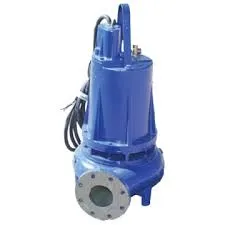Uighur
- Afrikaans
- Albanian
- Amharic
- Arabic
- Armenian
- Azerbaijani
- Basque
- Belarusian
- Bengali
- Bosnian
- Bulgarian
- Catalan
- Cebuano
- Corsican
- Croatian
- Czech
- Danish
- Dutch
- English
- Esperanto
- Estonian
- Finnish
- French
- Frisian
- Galician
- Georgian
- German
- Greek
- Gujarati
- Haitian Creole
- hausa
- hawaiian
- Hebrew
- Hindi
- Miao
- Hungarian
- Icelandic
- igbo
- Indonesian
- irish
- Italian
- Japanese
- Javanese
- Kannada
- kazakh
- Khmer
- Rwandese
- Korean
- Kurdish
- Kyrgyz
- Lao
- Latin
- Latvian
- Lithuanian
- Luxembourgish
- Macedonian
- Malgashi
- Malay
- Malayalam
- Maltese
- Maori
- Marathi
- Mongolian
- Myanmar
- Nepali
- Norwegian
- Norwegian
- Occitan
- Pashto
- Persian
- Polish
- Portuguese
- Punjabi
- Romanian
- Russian
- Samoan
- Scottish Gaelic
- Serbian
- Sesotho
- Shona
- Sindhi
- Sinhala
- Slovak
- Slovenian
- Somali
- Spanish
- Sundanese
- Swahili
- Swedish
- Tagalog
- Tajik
- Tamil
- Tatar
- Telugu
- Thai
- Turkish
- Turkmen
- Ukrainian
- Urdu
- Uighur
- Uzbek
- Vietnamese
- Welsh
- Bantu
- Yiddish
- Yoruba
- Zulu
Telephone: +86 13120555503
Email: frank@cypump.com
نويابىر . 27, 2024 21:18 Back to list
Rubber Throat Bushing for Slurry Pumps Enhancing Performance and Durability
Understanding Slurry Pump Rubber Throat Bush An Essential Component
Slurry pumps are vital machinery in many industries, particularly in mining, mineral processing, and wastewater treatment. One of the crucial components of slurry pumps is the rubber throat bush, which plays a significant role in the efficiency and functionality of the pump. This article delves into the importance, design, and maintenance of rubber throat bushes in slurry pumps, showcasing their essential role in enhancing pump performance and longevity.
What is a Rubber Throat Bush?
A rubber throat bush is a wear-resistant component typically made from high-quality elastomeric materials. Positioned at the pump’s throat area—the point where the slurry enters the pump—this component acts as a seal and lining. It helps in minimizing wear and tear caused by abrasive materials as they travel through the pump, extending the life of both the throat bush and the pump itself.
Importance of Rubber Throat Bushes
1. Wear Resistance One of the primary functions of the rubber throat bush is to resist wear from abrasive materials found in slurries, such as sand, gravel, and other particulate matter. The abrasive nature of these materials can lead to significant deterioration of metal components. By using a rubber throat bush, pumps can achieve a much longer operational life.
2. Sealing Capability The throat bush also plays a crucial role in creating a seal between the pump casing and the impeller. This sealing capability is essential to prevent leakages, ensuring that the slurry flow remains contained and efficient.
3. Vibration Damping Rubber materials are excellent at absorbing vibrations. The incorporation of rubber throat bushes in slurry pumps helps dampen vibrations generated during operation, which can lead to enhanced stability and reduced wear on other pump components.
4. Flexibility Unlike metal components, rubber throat bushes can accommodate minor misalignments in the pump, making them more flexible and reducing the risk of damage during operation.
Design Considerations
When designing a slurry pump with a rubber throat bush, several factors must be considered
slurry pump rubber throat bush

- Material Selection The choice of rubber material is paramount. It should have excellent abrasion resistance, flexibility, and chemical stability. Common materials include natural rubber, synthetic rubber, and various blends designed specifically for heavy-duty applications.
- Dimensions and Fit Precise dimensions are critical to ensure an effective seal and proper alignment within the pump. Any misfit can lead to reduced efficiency and increased wear.
- Temperature and Pressure Ratings The rubber throat bush should be capable of withstanding the operating temperatures and pressures typical of slurry pumping applications. Selecting the appropriate material that maintains integrity under these conditions is essential.
Maintenance Tips
To ensure the longevity and effectiveness of rubber throat bushes, proper maintenance practices should be followed
1. Regular Inspections Routine inspections of the throat bush can help identify signs of wear or damage early. Look for cracks, abrasions, or any misalignment that might indicate a need for replacement.
2. Cleaning Ensuring that the pump is clean and free from caked material can prevent excessive wear on the throat bush. Regular cleaning helps maintain operational efficiency.
3. Monitor Operating Conditions Keeping an eye on the temperature and pressure of the operating slurry can help prevent conditions that may lead to premature degradation of the throat bush.
4. Scheduled Replacements Establish a routine replacement schedule based on the pump’s operational cycle and historical wear patterns. Replacing the rubber throat bush at regular intervals is often more cost-effective than waiting until it fails.
Conclusion
The rubber throat bush is an integral component of slurry pumps, offering wear resistance, sealing capabilities, and operational flexibility. Understanding its importance will not only enhance the pump's efficiency but also prolong its lifespan. By selecting the right materials, ensuring proper design, and adhering to maintenance practices, industries can significantly improve their slurry pumping operations, ultimately leading to better productivity and reduced costs. Investing in high-quality rubber throat bushes ensures that your slurry pumps will perform optimally in even the most challenging conditions.
-
Reliable Non-Clog Sewage Pumps with GPT-4-Turbo Tech
NewsAug.04,2025
-
High-Performance Air Pumps for Sand & Gravel | Efficient Transport
NewsAug.03,2025
-
ISG Series Vertical Pipeline Pump - Chi Yuan Pumps Co., LTD.|Energy Efficiency, Corrosion Resistance
NewsAug.03,2025
-
ISG Series Pipeline Pump - Chi Yuan Pumps | Energy Efficiency&Compact Design
NewsAug.03,2025
-
ISG Series Vertical Pipeline Pump - Chi Yuan Pumps Co., LTD.|High Efficiency, Low Noise, Durable
NewsAug.02,2025
-
ISG Series Vertical Pipeline Pump - Chi Yuan Pumps | High Efficiency, Low Noise
NewsAug.02,2025










